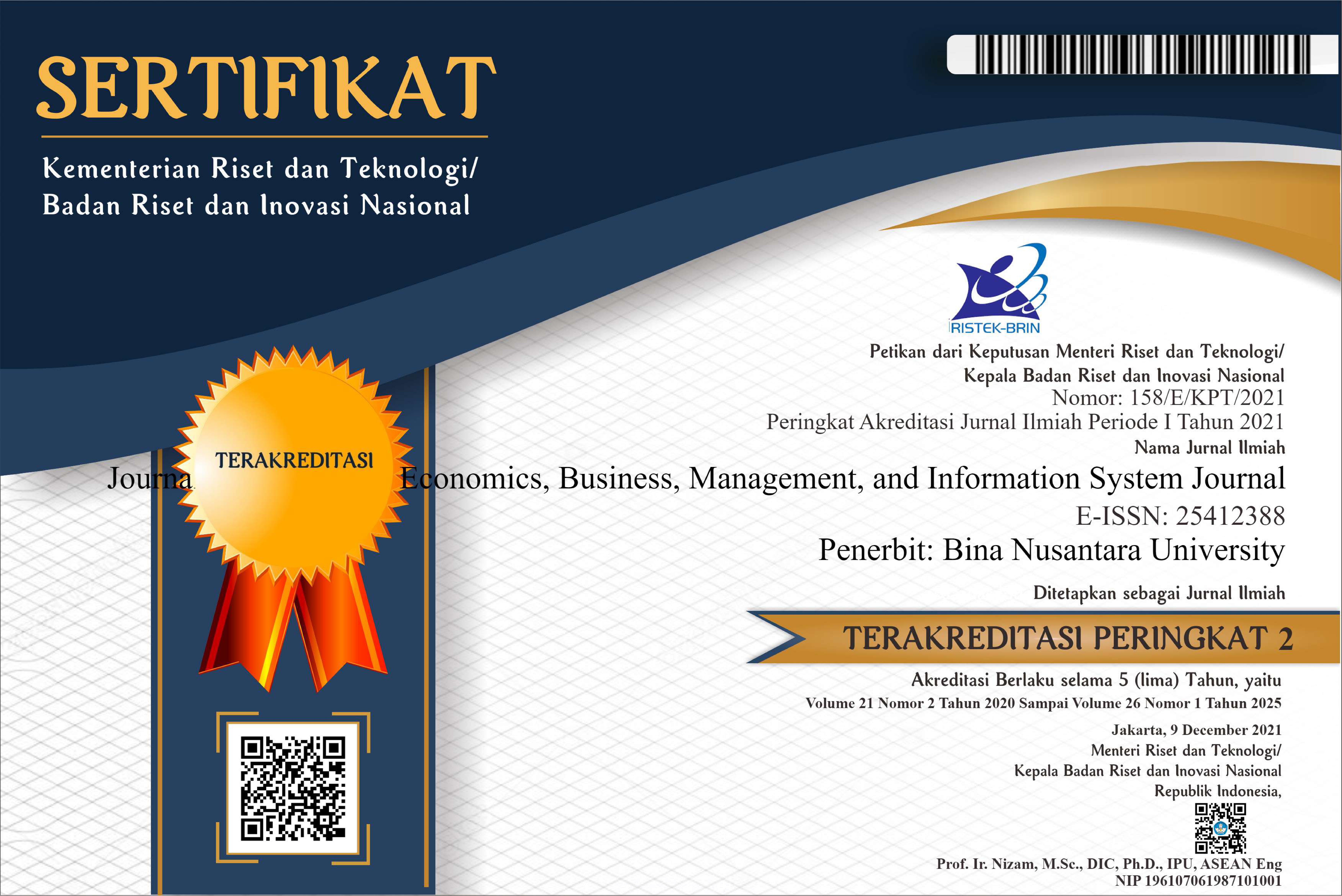Transforming Malaysia Towards an Innovation-Led Economy By Leveraging on Innovative Human Capital
DOI:
https://doi.org/10.21512/tw.v13i1.667Keywords:
innovation, human capital, pioneering minds, innovation-led economy, MalaysiaAbstract
Fostering “pioneering minds” is extremely important especially in the effort to shift Malaysia towards an innovation-led economy. The Malaysian government is confident of achieving this transformation agenda provided that the human capital is leveraged in ensuring innovation at the highest level. The primary aim of this research is to investigate the predictors that could nurture the “pioneering minds” by exploring the innovative performance of human capital from the perspective of social embedment and pro-innovativeness organisational architecture which could subsequently lead to excellent organisational performance. This research contributes to the existing literature on human capital and innovation by having better understanding on the specific factors that nurture the “pioneering minds” which are crucial for innovative performance.
Plum Analytics
References
Adler, P. S. and Kwon, S.W. (2002). Social capital: prospects for a new concept. The Academy of Management Review, 27 (1), 17-40.
Alegre, J., Lapiedra, R. and Chiva, R. (2006). A measurement scale for product innovation performance. European Journal of Innovation Management, 9, 333-346.
Alpkan, L., Bulut, C., Günday,G., Ulusoy, G. and Kilic, K. (2010). Organizational support for intrapreneurship and its interaction with human capital to enhance innovative performance. Management Decision, 48 (5), 732-755.
Anand, N., Gardner, H. K. and Morris, T. (2007). Knowledge based innovation: emergence and embedding of new practice areas in management consulting firms, Academy of Management Journal, 50, 406-428.
Barney, J. B. (1991). Firm resource and sustained competitive advantage. Journal of Management, 17, 99-120.
Barney, J. B. and Wright, P. M. (1998). On becoming a strategic partner: the role of human resource in gaining competitive advantage. Human Resource Management, 37, 31-46.
Boxall. P. (1996). The strategic HRM debate and the resource based view of the firm. Human Resource Management Journal, 6, 59-75.
Cabello-Medina, C., Carmona-Lavado, A., Pérez-Luño, A. and Cuevas-Rodríguez, G. (2011). Do best and worst innovation performance companies differ in terms of intellectual capital, knowledge and radicalness? African Journal of Business Management, 5 (28), 11450-11466.
Collis, D. and Montgomery, C. (1995). Competing on resource: strategy in the 1990s. Harvard Business Review, 73, 118-128.
De Jong, J. and Hartog, D. N. D (2007). How leaders influence employees’ innovative behaviour. European Journal of Innovation Management, 10 (1), 41-64.
De Jong, J. and Wennekers, S. (2008). Intrapreneurship: conceptualizing entrepreneurial employee behaviour. Scales Research Reports H200802, EIM Business and Policy Research.
Foss, N. J. (2007). The emerging knowledge governance approach: challenges and characteristics. Organization, 14, 29-52.
Galunic, C. and Rodan, S. (1998). Resource recombinations in the firm: knowledge structures and the potential for Schumpeterian innovation. Strategic Management Journal, 19, 1193-1201.
Jeong, I., Pae, J.H. and Zhou, D. (2006). Antecedents and consequences of the strategic orientations in new product development: the case of Chinese manufacturers. Industrial Marketing Management, 35, 348-358.
Kimberly, J. R. and Evanisko, M. J. (1981). Organisational innovation: the influence of individual, organizational and contextual factors on hospital adoption of technological and administrative innovations. Academy of Management Journal, 24, 689-713.
Leonard, D. and Sensiper, S. (1998). The role of tacit knowledge in group innovation. California Management Review, 40 (3), 112-132.
McKelvie, A. and Davidsson, P. (2006). From resource base to dynamic capabilities: an investigation of new firms. British Journal of Management, 20, 63-80.
Mumford, M. (2000). Managing creative people: strategies and tactics for innovation. Human Resource Management Review, 10, 313-351.
Nahapiet, J. and Ghoshal, S. (1998). Social capital, intellectual capital, and the organizational advantage. Academy of Management Review, 23, 242-266.
National Economic Advisory. (2010). Economic Transformation Programme Report. Retrieved September 2011, from http://www.neac.gov.my/node/80.
Raisch, S. and Birkinshaw, J. (2008). Organizational ambidexterity: antecedents, outcomes, and moderators. Journal of Management, 34 (3), 375-409.
Reed, K. K., Lubattkin, M. and Srinvasan, N. (2006). Proposing and testing an intellectual capital based view of the firm. Journal of Management Studies, 43(4), 867-894.
Rothwell, R. (1975). Intracorporate entrepreneurs. Management Decision, 13 (3), 142-54.
Spender, J. C. (1996). Making knowledge the basis of dynamic theory of the firm. Strategic Management Journal, 17, Winter Special Issues, 45-62.
Subramaniam, M. and Youndt, M. A. (2005). The influence of intellectual capital on the types of innovative capabilities. Academy of Management Journal, 48, 450-463.
Taggar, S. (2002). Individual creativity and group ability to utilize individual creative resources: a multilevel model. Academy of Management Journal, 45, 315-330.
Zhou, K. Z. (2006). Innovation, imitation and new product performance: The case of China. Industrial Marketing Management, 35, 394-402.
Downloads
Published
Issue
Section
License
Authors who publish with this journal agree to the following terms:
a. Authors retain copyright and grant the journal right of first publication with the work simultaneously licensed under a Creative Commons Attribution License - Share Alike that allows others to share the work with an acknowledgment of the work's authorship and initial publication in this journal.
b. Authors are able to enter into separate, additional contractual arrangements for the non-exclusive distribution of the journal's published version of the work (e.g., post it to an institutional repository or publish it in a book), with an acknowledgment of its initial publication in this journal.
c. Authors are permitted and encouraged to post their work online (e.g., in institutional repositories or on their website) prior to and during the submission process, as it can lead to productive exchanges, as well as earlier and greater citation of published work.
USER RIGHTS
All articles published Open Access will be immediately and permanently free for everyone to read and download. We are continuously working with our author communities to select the best choice of license options, currently being defined for this journal as follows: Creative Commons Attribution-Share Alike (CC BY-SA)

















